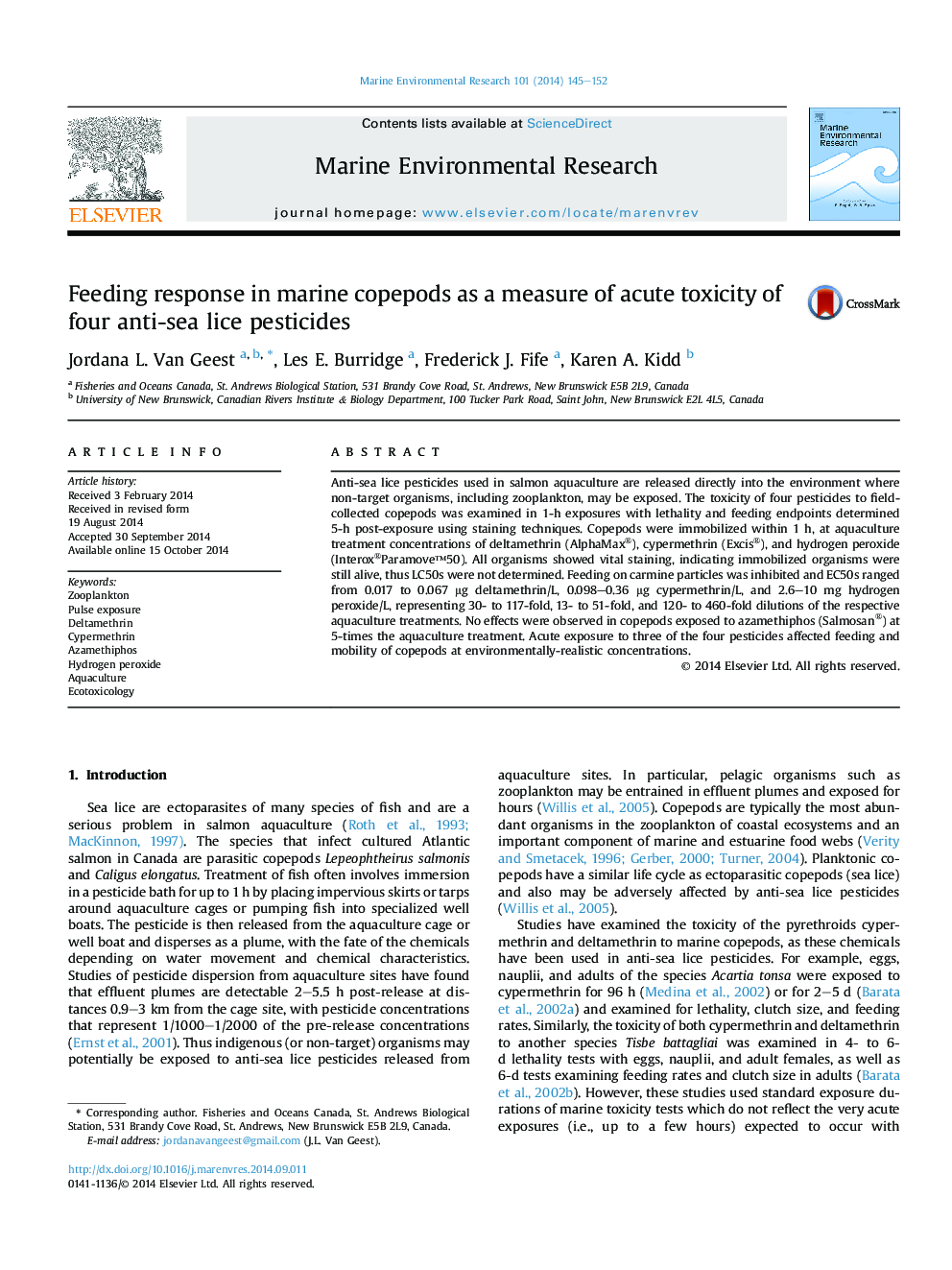| Article ID | Journal | Published Year | Pages | File Type |
|---|---|---|---|---|
| 4550752 | Marine Environmental Research | 2014 | 8 Pages |
•Acute toxicity of four anti-sea lice pesticides to copepods was examined.•Immobility occurred within 1 h, at concentrations equal to aquaculture treatments.•Acute lethality was not observed 5 h after a 1-h exposure.•Feeding inhibition occurred at and below aquaculture treatments concentrations.•Feeding and mobility were affected at environmentally-realistic concentrations.
Anti-sea lice pesticides used in salmon aquaculture are released directly into the environment where non-target organisms, including zooplankton, may be exposed. The toxicity of four pesticides to field-collected copepods was examined in 1-h exposures with lethality and feeding endpoints determined 5-h post-exposure using staining techniques. Copepods were immobilized within 1 h, at aquaculture treatment concentrations of deltamethrin (AlphaMax®), cypermethrin (Excis®), and hydrogen peroxide (Interox®Paramove™50). All organisms showed vital staining, indicating immobilized organisms were still alive, thus LC50s were not determined. Feeding on carmine particles was inhibited and EC50s ranged from 0.017 to 0.067 μg deltamethrin/L, 0.098–0.36 μg cypermethrin/L, and 2.6–10 mg hydrogen peroxide/L, representing 30- to 117-fold, 13- to 51-fold, and 120- to 460-fold dilutions of the respective aquaculture treatments. No effects were observed in copepods exposed to azamethiphos (Salmosan®) at 5-times the aquaculture treatment. Acute exposure to three of the four pesticides affected feeding and mobility of copepods at environmentally-realistic concentrations.
